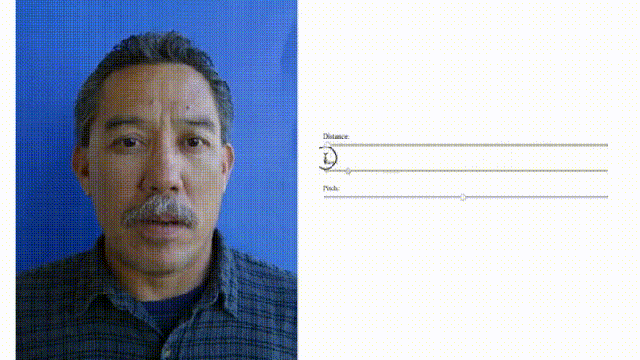Science has already proven that certain camera lenses can distort your face (so don’t worry if you just can’t seem to look right in photos), but there’s more that can go into your appearance in a selfie. For instance, the closer the camera is to your face, the larger your nose looks, the smaller your ears look, and the more slope that’s applied to your forehead.
YouTube
Researchers at Princeton University wanted to find a way to help people improve their selfies without having to repose and reshoot, so they have created a new form of photo manipulation. According to a paper to be published in ACM Transactions on Graphics and to be presented at this weekend’s SIGGRAPH conference, this software allows the user to modify a portrait so that it appears to fix distance, which in turn improves the facial distortions that can appear.
“Now that people can edit so many aspects of a photo right on their phones, we wanted to provide a quick way to edit faces that maintains realism,” said Ohad Fried, lead developer on the project, said in a statement.
Researchers utilised a model that generates 3D human heads and used a program developed at Carnegie Mellon University, which helps to identify over 70 reference points across the face. In the demonstration made available on Princeton’s website, the user is asked to identify three: right above both ears and at the top of the head.
With this information, the program is able to seemingly manipulate the camera’s distance and angles to create the best-looking image.
“I believe the reason the synthetic image looks so good is that it has exactly the same pixel colours as in the original photo — it’s just that they have been moved around a little bit to provide the illusion that the camera had been in a different location,” said Adam Finkelstein, senior author on the paper.
What researchers have done is created a way to manipulate a model of a head in two dimensions without having to form a three-dimensional model. The demonstration showcases some of the kinks — it doesn’t know what to do when you can’t pinpoint the ears, hair gets distorted, and it only really works with a head-on image — but moving the sliders back and forth creates something out of Harry Potter: an eerily moving image.
While the demonstration doesn’t provide the same results as the “implementation described in the paper,” it does provide a neat representation of what the software could do. Check it out here and play around a bit, watching your image seemingly begin to move before your very eyes.
As for whether you can use a full version soon, researchers are still working on those previously-mentioned issues. Adobe research contributed to the project, so we can only guess that Photoshop and other programs will utilise it when it’s ready for commercial use.
[Motherboard via Princeton]
